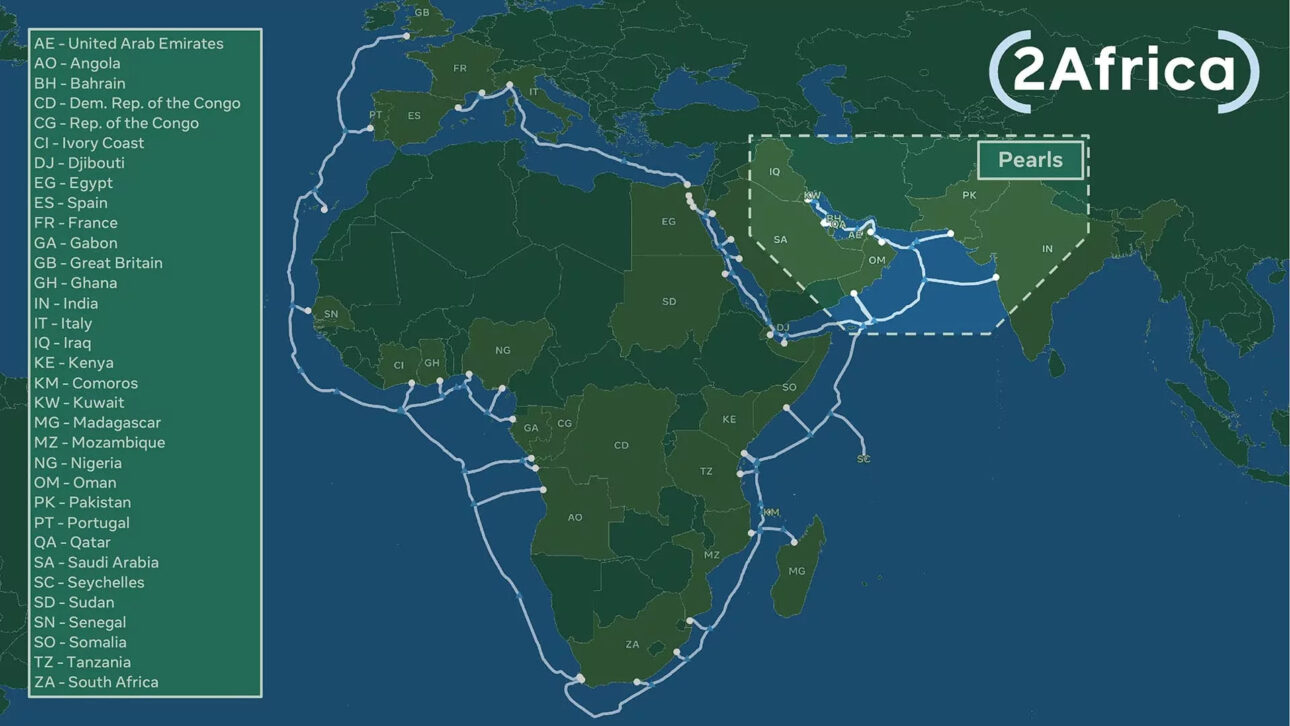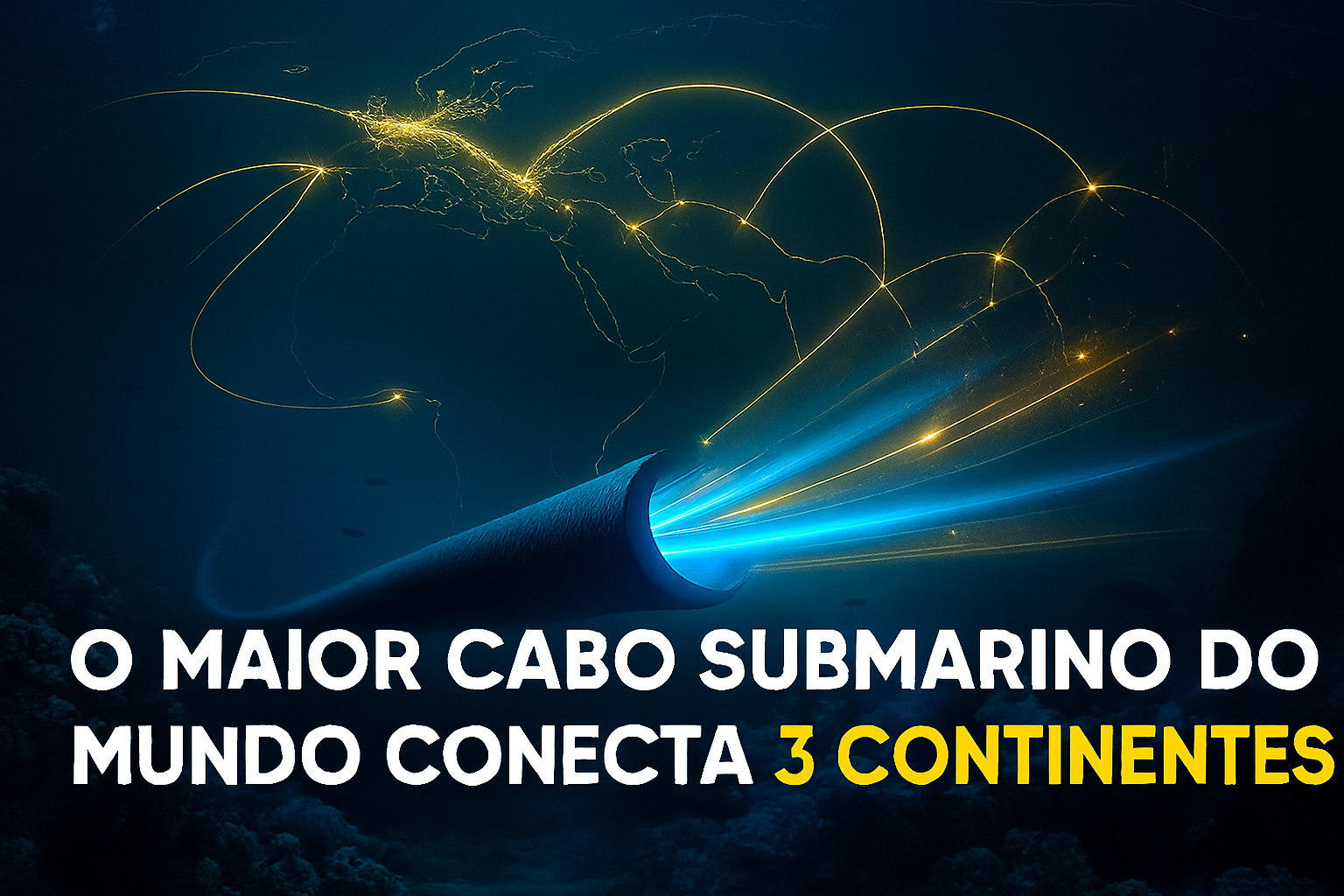Beneath the planet’s oceans, where sunlight cannot reach and pressure can crush steel, lies one of the greatest feats of modern engineering, an invisible structure that keeps the world connected. It’s the 2Africa, the biggest submarine internet cable system already built, with 45 thousand kilometers long and transmission capacity that reaches 180 terabits per second (Tbps). The project, led by a global consortium of telecommunications and technology companies, aims to connect Africa, Europe and Asia, forming a digital ring around three continents and revolutionizing network access in dozens of emerging countries.
A project that changes the digital geography of the planet
Announced in 2020 and under implementation since 2022, 2Africa is a project of unprecedented scale. Its extension is equivalent to more than going around the Earth completely and covers 46 connection points (“landings”) in 33 countries, including Egypt, Spain, Nigeria, South Africa, Saudi Arabia, Oman, India and France.
According to the responsible consortium, the cable’s main mission is multiply internet capacity in Africa by 16, a continent where the cost and limited infrastructure still prevent full digital inclusion.
— ARTICLE CONTINUES BELOW —
2Africa must connect 1,2 billion people faster and more stable, reducing dependence on terrestrial and satellite networks.

The project is led by giants such as Meta Platforms (Facebook), Vodafone Group, China Mobile International, Orange, STC (Saudi Telecom Company) e Telecom Egypt, with support from companies specialized in ocean cables such as Alcatel Submarine Networks (ASN).
The goal is for the entire system to be fully operational by 2025, with the latest connections being activated on the Mediterranean coast and the Arabian Peninsula.
A colossal underwater engineering
Building a global submarine cable is a challenge comparable to launching a rocket into space. 2Africa is composed of 16 pairs of optical fiber encapsulated in multiple layers of insulation, shielding and metal armor.
Every inch is designed to withstand deep-sea pressure, corrosion, and even shark bites—a real risk documented in other cables.
During installation, specialized ships map the seabed with sonar to define safe routes, avoiding underwater volcanoes and geological faults.
The cable is then slowly unrolled from the deck, descending to the ocean floor and being buried in some sections close to the coasts, to avoid damage caused by anchors or fishing.
The maximum depth of 2Africa reaches 8.000 meters, and the project has already been classified by PR Newswire and Reuters , the “the largest submarine fiber optic network in the history of mankind”.
Connecting three continents and hundreds of millions of people
The name “2Africa” is not accidental, the goal is to transform the African continent into the new global digital axis, connecting it to European and Asian networks with low latency and high speed.
The circular structure directly connects the Mediterranean Sea, Mar vermelho, The Indian Ocean and Atlantic, creating an unprecedented redundancy route: if one section fails, traffic can be automatically redirected through the other side of the ring.
This architecture is considered interruption-proof, and guarantees the system reliability of 99,999%, a standard required in critical applications such as banks, stock exchanges and defense systems.
According to Vodafone Global Enterprise, 2Africa will be able to increase African GDP by up to US$26 billion per year after its completion, thanks to the expansion of e-commerce, distance education and digital financial services.
A milestone for the new technological race
The 2Africa project is also a reflection of the new geopolitical dispute over global connectivity. Just as ports and pipelines were strategic in the 20th century, now submarine cables have become the “data pipelines” of the 21st century.
Today more than 98% of all international internet traffic travels through submarine cables, not satellites, as many imagine. This includes messages, calls, videos, banking transactions, and military communications. In this context, 2Africa is a tool of economic and diplomatic power:
For Meta, it guarantees technological autonomy compared to rivals such as Google and Amazon, which operate their own global networks.
For China Mobile, the project strengthens China’s presence in African and Middle Eastern countries.
For Vodafone and European operators, it represents the chance to diversify routes and reduce interconnection costs.
The result is a network with a direct impact on the global economy — and with strategic importance comparable to that of the Suez Canal or the ancient Silk Road.
The future is already connected
The first sections of 2Africa have already been active since 2023, with confirmed landings in the United Kingdom, Spain, Egypt, Kenya, and South Africa. Next steps include connections in the Persian Gulf, the Indian coast, and the Arabian Sea, consolidating full coverage by 2025.
In addition to expanding internet access, the system will serve as basis for 5G and 6G networks, data centers and cloud computing, consolidating the digital infrastructure of three continents interconnected by a single submerged “ring of light”.
More than a feat of engineering, 2Africa represents an invisible revolution: a cord of glass and light that stitches together continents, economies, and people in real time.
Beneath the seas, where once only ships crossed, now runs the true route of the 21st century — the data route.


